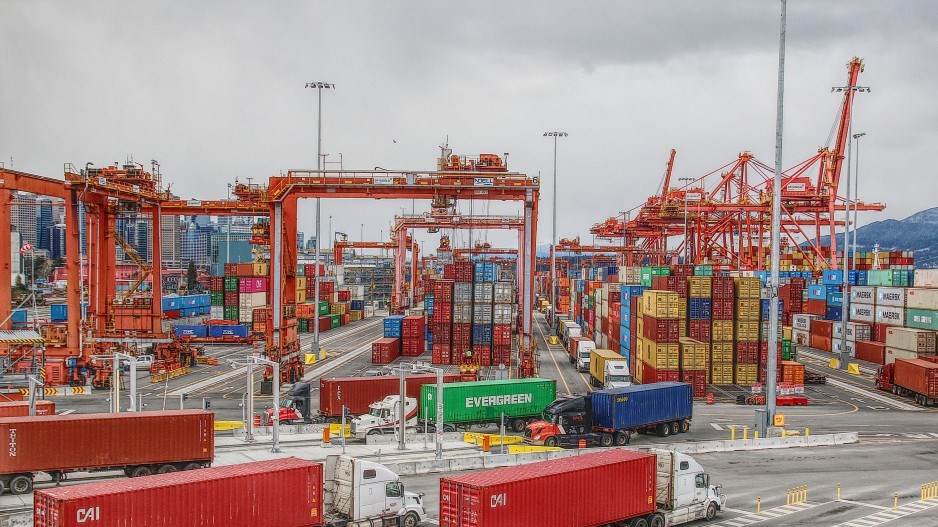Container traffic at the Port of Vancouver will soon begin to ramp up.
DP World Ltd., the logistics firm operating the Centennial Terminal (Centerm) at the Port of Vancouver, announced a new partnership with the Gemini Cooperation on Monday.
The new partnership will begin rolling out next month.
Along with recent upgrades to the port, the new partnership will increase the volume of cargo that is loaded and unloaded at the Vancouver terminal.
With Centerm currently running at around 900,000 20-foot containers annually, the partnership plans to grow to over a million containers by next year and grow beyond, DP World Canada CEO Douglas Smith told BIV.
DP World will also ensure Gemini’s operations are 90 per cent on time, with Smith adding the on-time world was lost during the pandemic.
The Gemini Cooperation, an agreement between Hapag-Lloyd AG and Maersk A/S, consists of a fleet of 340 vessels, 87 ports and a combined capacity of 3.7 million 20-foot containers (a unit of cargo capacity).
As the port operator, DP World will become a major stakeholder in the logistics chain, having to ensure readiness to unload and export, with rail services matching their timelines.
“We are one of a tri-party that has to come together and work,” said Smith. “If the rail isn't on time, or we're not ready, or the ship isn't on time, the whole thing falls apart.”
In early 2023, construction of the $350-million Centerm expansion project was completed after four years, allowing it to handle 60 per cent more containers annually – an increase from 900,000 20-foot containers to about 1.5 million.
Upgrades also included an expansion of the container yard and a new operations facility.
However, a key piece of the puzzle on the rail side is still pending.
The terminal’s semi-automated rail-mounted gantry cranes (RMGs) are finished but still not online, following what Smith described as union pushback and ongoing negotiations.
“It already operates at Delta terminal for the past five years with the same union that’s complaining to us,” he said. “It’s well-proven. It drives efficiency.”
Negotiations took longer than planned, he added. Nevertheless, they are in the plans and will go live.
Once online, the cranes should give four hours more of operations a day, according to Smith.
“This isn't getting rid of people,” he said. “It's about making sure everything we’ve planned comes online to service a customer to the expectation that they want.”
By reducing the time a container sits on the terminal by about a day, this will in turn increase the port’s capacity and ensure faster delivery to customers.
“We're all one team to come together to deliver that product,” Smith said. “This is a perfect win-win opportunity to come together and start filling up this terminal.”
–With files from Timothy Renshaw



